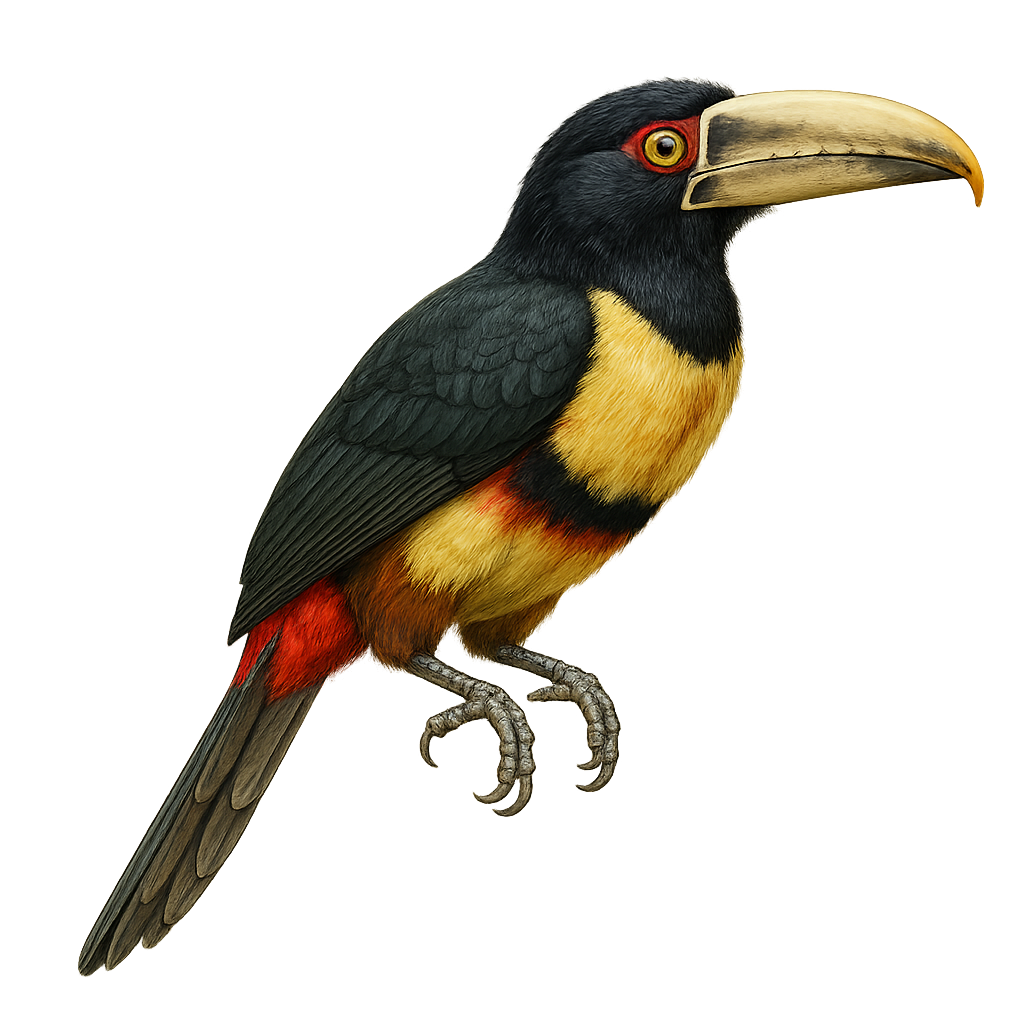Your wildlife photography guide.
Explore the azara's tanager in detail, study its behavior, prepare your shots.
Where to observe and photograph the azara's tanager in the wild
Learn where and when to spot the azara's tanager in the wild, how to identify the species based on distinctive features, and what natural environments it inhabits. The WildlifePhotographer app offers tailored photography tips that reflect the azara's tanager’s behavior, helping you capture better wildlife images. Explore the full species profile for key information including description, habitat, active periods, and approach techniques.
Azara's Tanager
Scientific name: Pteroglossus azara

IUCN Status: Least Concern
Family: RAMPHASTIDAE
Group: Birds
Sensitivity to human approach: Suspicious
Minimum approach distance: 10 m
Courtship display: October to December
Incubation: 15-17 jours
Hatchings: October to January
Habitat:
Tropical rainforests, forest edges, wooded areas
Activity period :
Primarily active during the day, with peak activity in the morning and late afternoon.
Identification and description:
The Azara's Tanager is a colorful bird belonging to the toucan family. It is distinguished by its vibrant plumage, mainly black with touches of red, yellow, and green. Its long, curved beak is typical of toucans and features distinctive patterns. This bird measures about 30 to 40 cm in length. It primarily inhabits the tropical rainforests of South America, notably in Brazil, Bolivia, and Paraguay. The Azara's Tanager is a social bird, often seen in small groups. It mainly feeds on fruits but also consumes insects and small vertebrates. Although not considered threatened, deforestation poses a potential threat to its natural habitat.
Recommended lens:
400mm – adjust based on distance, desired framing (portrait or habitat), and approach conditions.
Photography tips:
To photograph the Azara's Tanager, it is advisable to use a 400mm lens or longer to capture precise details of its colorful plumage. Opt for early morning or late afternoon hours when the light is soft and enhances the bird's vivid colors. Be patient and discreet, as this bird can be suspicious. A tripod can be helpful to stabilize your camera, especially if using a heavy telephoto lens.
From knowledge to field practice
A species profile helps you understand an animal. In the field, the challenge is often different. Remembering your own observations.
The WildlifePhotographer app allows you to:
• record your personal observations
• note locations, dates, and behaviors
• revisit your field references over time
• build a private and long-term field logbook
The app does not provide observation locations.
It helps you organize what you actually observe, with respect for wildlife.

